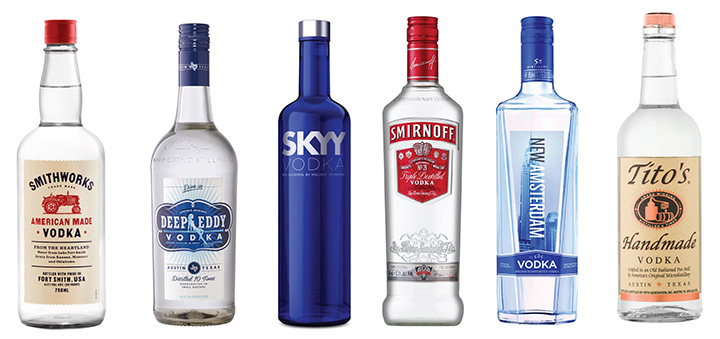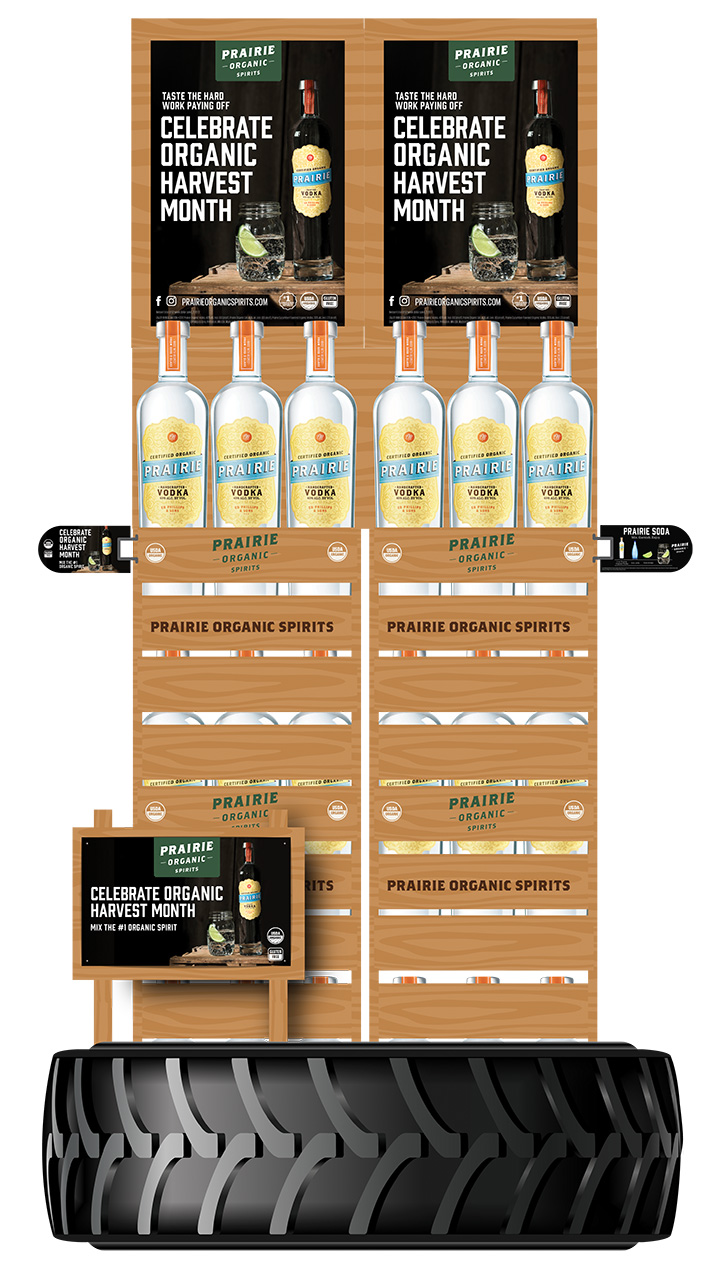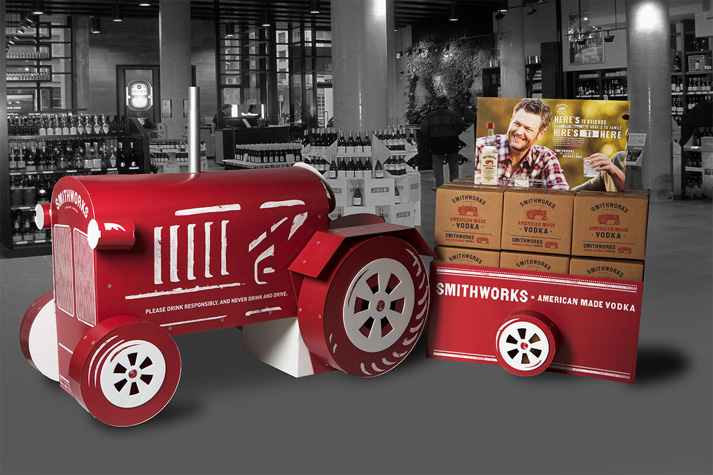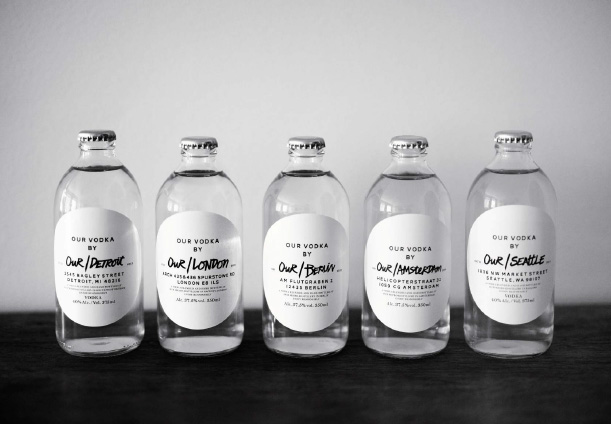When the vodka boom exploded at the turn of the century, the race to create the most elegant and refined brand image and package, using elaborate distillation and filtration processes as well as a variety of ingredients, put imported vodkas at the top of the heap. More obscure, unique and exotic meant better, the thinking went at the time.
With few exceptions, while vodkas from all over the world were getting plenty of attention, American-made brands were mostly afterthoughts in the minds of many consumers and retailers, often relegated to the bottom shelf with brands engaged in a race-to-the-bottom kind of price war that left little profit.
But a number of factors – the burgeoning small American distiller industry; the locavore trend in product provenance, stories and ingredients; a renewed interest in American-made spirits, as well as an understanding that great value could be had at more reasonable prices – have lately changed the game.
Now American-made vodkas are growing at a rate that surpasses imports. Further, some of the hottest vodka brands are made in the U.S.

Tito’s is continuing its multi-year boom, while others surge as well. Most of the volume increase in 2016 came from relative newcomer premium brands – Tito’s, New Amsterdam, Platinum 7X and Deep Eddy. Meanwhile brands like Skyy, Burnett’s and Seagram’s maintained their places near the top of the heap. And volume is shifting from value brands to premium-plus.
And then there’s Smirnoff, the Russian-sounding vodka with 80 year American roots, which dominates the domestic market at more than 9.4 million cases.
Pricing is notoriously savage in the vodka category, and with consumers now more educated, their willingness to spend is being tempered by awareness about quality. “As good as imported vodkas are, consumers have learned that they don’t need to spend $30 for a really good vodka,” says Michael Sachs, director of marketing for E & J Gallo and its New Amsterdam brand. “I think a lot of the American brands, starting maybe 20 years ago, started the trend so that people could recognize that American vodkas can be really great vodkas.”
Newer efforts are gearing up as well. Pernod Ricard has two in early stages, including the city-centric Our/Vodka project. The brand now includes international variants made in London, Berlin and Amsterdam, and two in the U.S. – Detroit and Los Angeles (with Miami and New York coming soon). Targeted primarily off-premise, the brands at least initially will be hyper-local and sold only within the marketing areas, although Our Vodka Detroit has a presence in Chicago Whole Foods units.
“The idea was to create a brand that’s global and local at the same time,” says Our/Vodka business development director for the U.S., Sebastian Tondo. “The branding is the same, but each city is marketed a different way because we partner with local entrepreneurs tied to the identity of the city. No large investment on marketing, but building brands from the ground up by building a direct connection with local consumers.”
And the company also launched in 2016 Smithworks in partnership with country star Blake Shelton, a brand with imagery and presentation that clearly signals “American-made.”
Retailers can expect that the newer vodkas from small and large American producers will continue, says Richard Black, VP marketing for vodka and cordials for Campari Americas.
“We’re obviously seeing a proliferation of American-made vodkas, and a few are emerging that are doing incredible things in terms of market share gains. We see the vodka category ripe for disruption with a lot of micro and craft distillers coming onboard.” Black says local pride resonates at retail, which for Skyy means focusing on its American entrepreneurial roots.
“There’s a lot of great vodka out there now, which is awesome, because it means people have more choice,” says Nicole Portwood, VP of brand marketing for Tito’s. “Since the recession of 2008, American entrepreneurialism and the stories of makers have become a true movement.”
Finding New Customers
Titos’ continued penetration (it was up more than 36 percent last year to become the second best selling domestic vodka) has sometimes benefited from aggressive market introductions. At Jubilation Wine and Spirits in Albuquerque, New Mexico, spirits manager Joslyn Hidalgo says it’s now the leading brand at her store. The growth was built on a major sale started last year for the brand, knocking import Svedka into second place.
Sales are important as ways to increase sampling, she says. “With vodka, it’s kind of hard to explain to people the real differences; you can talk about water sources and what it’s made of, but the differences are subtle to a lot of our customers. They need an attractive price.”
Those connections have shifted attention somewhat among American consumers, but the category is still a hard-fought battlefield. “The vodka category is extremely competitive right now for domestic and global players,” says Matthew Pechman, vice president marketing at Heaven Hill’s Deep Eddy. “There’s a lot being invested into the category and it’s becoming more competitive from a pricing standpoint as well. The important point now is creating differentiation for consumers compared to the big players.”
Reid Hafer, senior brand manager in charge of Deep Eddy’s stablemate Burnett’s, agrees. “The biggest challenges are continuing to stand out in the crowded vodka market, and being smarter on a packaging and marketing perspective. We have a very loyal consumer base, but it’s important to be relevant and create awareness among new users to the category.”
Black says even though a lot of growth is coming from the brands with higher prices, some of the imports have been taking aggressive price cuts. “We have to be very conscious of our pricing strategy on a state-by-state basis to make sure the value proposition is there for consumers.” With many retailers using vodka as a loss leader to bring consumers into stores, it’s a hard fight, he adds.

Product Promotion
Locally produced brands are poised to take small bites out of the growing market as well. At Jubilation, vodkas produced in Albuquerque or Santa Fe are breaking into the top five of domestic vodka sales, in some cases outpacing massive brands like Ketel One and Absolut.
That competition has made brand reps more aware of retailers’ needs in terms of promotional activity. Says Sachs, “Larger retailers are going to look for brands with pull off the shelves that consumers are looking for, and they’ll be themselves promoting local brands. You see craft has taken a foothold in local markets, and they don’t have any tolerance for brands that don’t sell.”
What retailers desire depends a lot on the channel, he says. “The grocery channel wants things to be engaging to the consumer, like cocktail and drink recipes and menus and other added value to get consumers to interact with the brands. Liquor stores want pieces that will stand out over a longer term.”
New Amsterdam has been working on its “Pour Your Soul” ad and marketing campaign, launched around the NBA Finals in June, which Sachs says is expected to be a long-term platform.
For category leader Smirnoff, there’s a return from the flavor frenzy to a focus on the classic brand, says Johanna Rogers, senior brand manager.
“Today, more consumers are looking for a quality vodka at an affordable price,” she says. “This is great news for Smirnoff as the brand’s base vodka – Smirnoff No. 21 – is tasteless, odorless and smooth, just as any quality vodka should be, while remaining at an affordable price point. This year, Smirnoff is focusing on highlighting Smirnoff No. 21 as a quality, affordable vodka, as well as spreading the word that Smirnoff is (in fact) American-made.”
Promotional campaigns are crucial to most leading brands. “They are hugely important for us,” says Tito’s VP of trade marketing Frank Polley. “We use them to create meaningful conversations with our customers. Whether it’s a ‘text to donate’ to a local charity campaign or a fun brand item up for grabs, our retailers and the promotions they are able to implement afford us the opportunity to connect with our customers.”
Titos’ off-premise programming is centered on key shopping occasions, like Tito’s Tailgate coming this fall with POS support.
It’s the same for Phillips Distilling, with both UV and Prairie Organic brands, says VP of Marketing, Scott Meek. “Promotion programming and displays at retail are where consumers experience brands, and it’s a great opportunity for us to tell their story,” he says.
Research tells Phillips it’s important to have the brands in front of consumers. “It’s critically important for retailers to drive category growth, for consumers to find the brand and discover how to use it. There’s nothing more important for us from a marketing perspective than creating great programming for retailers that consumers will love.”
UV is in the third year of its “Salute the Heroes” campaign partnering with the U.S. Chamber of Commerce to help active duty military and veterans find employment. That program includes outside store and social media activation, donations and a website to help facilitate job postings in the industry. UV now has ten iterations, but Phillips is focusing on the 80-proof unflavored, blue and cherry currently, with a renewed package rolling out this year making “Made in the USA” more prominent.
For Prairie Vodka, displays are focusing on the connection with regional farmers and the organic corn source for the brand.

Newcomer Smithworks is making a full-press on the American-made connection, with a tractor on the label and a launch in states including Missouri, Kansas and Oklahoma (the source of the corn used), and Arkansas (which supplies the water), says brand director Troy Gorczyca
Now in the process of expanding into other states, the brand was specifically created as a heartland vodka. “We wanted to call out very clearly that it’s American-made, stating on the label where the corn and water are from and showcasing the tractor,” he says.
“We all know that consumers are looking for brands with an authentic story they can identify with,” he adds. “We know that it is a very crowded category, so we needed to find a way to get the message out there.” Blake Shelton came to Pernod at the time they were developing their own ideas, and Gorzyca says he’s a partner with a serious involvement in the brand.
Deep Eddy continues to ride the fun brand imagery and feel, Pechman says. “We feel strongly that given the personality of the brand – fun loving, laid back – we don’t take ourselves too seriously. Although we take making vodka seriously. In-store we’re looking for impactful displays that bring the brand’s personality to life,” including the 1950s-style pin-up Betty icon. “We’re looking to translate the brand’s personality to retail as a key point of differentiation from the brands that are in a more stylish and sophisticated space,” he adds.
Burnett’s, even with more than 30 flavors, still accrues most of its sales from the straight variant. For the last two years the brand’s seasonal packaging of a 1.75-liter USA Party edition allowed for a lot of great floor displays, Hafer says, and this year it’s being repeated with the focus including fall tailgate displays.
Skyy, with 16 infusions but a focus on standard, citrus, blood orange and pineapple, just turned 25 years old and has launched a new campaign called “Make Every Day” to encourage consumers to take chances. The brand also launched a new infusion, apricot. “We really want to be constant in our messaging and we’re going to build on the story of founder Maurice Kambar, telling that story to new consumers who don’t know it,” Black says.
Even though older consumers may still think of brands like Skyy as newcomers, the emerging consumer is a blank slate. “Being established gives you a certain amount of opportunity. We are reintroducing the Skyy story to a new generation of consumers,” Black adds.
With stories being so important in today’s domestic vodka market, it seems most brands will be expected to do the same if they want to climb the price and popularity ladders in this crowded market.
Jack Robertiello is the former editor of Cheers magazine and writes about beer, wine, spirits and all things liquid for numerous publications. More of his work can be found at www.jackrobertiello.com.










